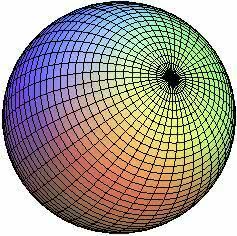Systems of equations are nothing more than strategies that allow us to solve problems and situations involving more than one variable and at least two equations. If the equations present in the system involve only the addition and the subtraction of the unknowns, we say that it is a 1st degree equation system. We can solve this system in two ways, through the graphic representation or algebraically. In algebraic form, we have two alternatives, the method of addition or from replacement.
In the case of a multiplication between the unknowns or, simply, that one of them appears as an exponent power 2, we say that the system also involves 2nd degree equations. To solve such a system, the strategies are the same as mentioned above, but there may be more solutions in this case.
Let's look at some examples of solving systems of 1st and 2nd degree equations:
1st Example:
Note that, in this example, the equation x·y = 15 provides a product among the unknowns x and y, so this is a 2nd degree equation. To solve it, let's use the substitution method. In the second equation, we will isolate x:
2x – 4y = – 14
2x = 4y - 14
x = 4y – 14
2
x = 2y - 7
Now we will replace x = 2y - 7 in the first equation:
x·y = 15
(2y – 7)·y = 15
2y² - 7y - 15 = 0
To find possible values for y, we will use Bhaskara's formula:
Δ = b² - 4.a.c
Δ = (– 7)² – 4.2.(– 15)
Δ = 49 + 120
Δ = 169
y = – b ± √Δ
2nd
y = – (– 7) ± √169
2.2
y = 7 ± 13
4
y1 = 7 + 13 |
y2 = 7 – 13 |
Now we can replace the found values for y in x·y = 15 in order to determine the values of x:
x1 · y1 = 15 |
x2 · y2 = 15 |
We can say that the equation has two solutions of the type (x, y), are they: (3, 5) and (– 10, – 3/2).
2nd Example:
To solve this system, we will use the addition method. To do this, let's multiply the first equation by – 2. Our system will look like this:
Do not stop now... There's more after the advertising ;)
(– 2x² + 2x²) + (– 4y² – 3y²) = (– 178 + 150)
0x² – 7y² = – 28
7y² = 28
y² = 28
7
y = ±√4
y1 = + 2
y2 = – 2
Now we can replace the found values for y in the first equation in order to obtain the values of x:
|
x² + 2y1² = 89 x² + 2.(2)² = 89 x² + 8 = 89 x² = 81 x = ±√81 x1 = + 9 x2 = – 9 |
x² + 2y2² = 89 x² + 2.(– 2)² = 89 x² + 8 = 89 x² = 81 x = ±√81 x3 = + 9 x4 = – 9 |
We can say that the equation has four solutions: (9, 2), (– 9, 2), ( 9, – 2) and (– 9, – 2).
3rd Example:
In solving this system of equations, we will use the substitution method. In the second equation, let's isolate x:
2x - 3y = 2
2x = 3y + 2
x = 3y + 2
2
x = 3y + 1
2
we will replace x in the first equation:
x² + 2y² = 1
(3y/2 + 1)² + 2y² = 1
9y² + 3y + 1 + 2y² = 1
4
We will multiply the entire equation by 4:
9y² + 12 y + 4 + 8y² = 4
17y² + 12y = 0
To find possible values for y, let's use Bhaskara's formula:
Δ = b² - 4.a.c
Δ = 12² – 4.17. 0
Δ = 144
y = – b ± √Δ
2nd
y = – 12 ± √144
2.17
y = – 12 ± 12
34
|
Y1 = – 12 + 12 34 y1 = 0 34 y1 = 0 |
y2 = – 12 – 12 34 y2 = – 24 34 y2 = – 12 17 |
Replacing found values for y in 2x - 3y = 2, we can determine the values of x:
|
2x - 3y1 = 2 2x – 3·0 = 2 2x - 0 = 2 x = 2 2 x1 = 1 |
2x - 3y2 = 2 2x - 3·(– 12/17)= 2 2x + 36 = 2 17 2x = 2 – 36 17 2x = - 2 17 x2 = – 1 17 |
We can say that the equation has two solutions of the type (x, y), are they: (1, 0) and (– 1/17, – 12/17).
By Amanda Gonçalves
Graduated in Mathematics
Would you like to reference this text in a school or academic work? Look:
RIBEIRO, Amanda Gonçalves. "System of 1st and 2nd Degree Equations"; Brazil School. Available in: https://brasilescola.uol.com.br/matematica/sistema-equacoes-1-o-2-o-grau.htm. Accessed on June 28, 2021.



